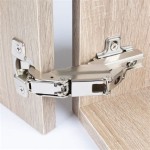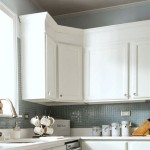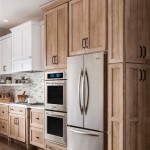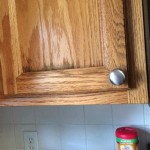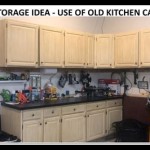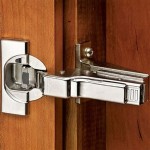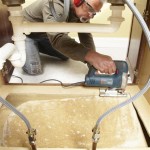Mama Kitchen Cabinet: A Comprehensive Guide
The kitchen cabinet serves as the backbone of any culinary space, providing essential storage and contributing significantly to the overall aesthetic. Understanding the various types of kitchen cabinets, materials, and design considerations is crucial for creating a functional and visually appealing kitchen. This guide explores the key aspects of kitchen cabinets, offering valuable insights for homeowners embarking on a kitchen renovation or new build.
Kitchen cabinets are broadly classified into framed and frameless constructions. Framed cabinets, also known as traditional or American-style cabinets, feature a face frame attached to the front of the cabinet box. This frame provides structural rigidity and a platform for attaching doors and drawers. Frameless cabinets, also called European-style cabinets, lack a face frame. The doors and drawers are attached directly to the sides of the cabinet box, resulting in a sleek, contemporary look and maximizing interior storage space.
A wide range of materials is available for constructing kitchen cabinets, each offering distinct advantages and disadvantages. Solid wood remains a popular choice, prized for its durability, natural beauty, and timeless appeal. However, solid wood cabinets can be expensive and require regular maintenance to prevent warping or damage from moisture. Plywood, an engineered wood product, offers a more affordable and stable alternative to solid wood. It is constructed from layers of wood veneer glued together, providing strength and resistance to moisture.
Medium-density fiberboard (MDF) is another commonly used material for kitchen cabinets. MDF is made from wood fibers bonded with resin and compressed under high pressure. It offers a smooth, uniform surface, making it ideal for painting. However, MDF is more susceptible to moisture damage than plywood or solid wood. Particleboard, a less expensive option, is made from wood chips and resin. While it provides a cost-effective solution, particleboard is less durable and more prone to damage than other cabinet materials.
Beyond the core construction material, the exterior finish of the cabinets plays a crucial role in the overall aesthetic of the kitchen. Various finishes are available, ranging from natural stains that highlight the wood grain to painted finishes that offer a wide range of color options. Thermofoil, a vinyl laminate applied to MDF or particleboard, provides a durable and easy-to-clean surface. Laminate cabinets, constructed by bonding a thin layer of plastic to a substrate, offer a budget-friendly and versatile option.
The layout and configuration of the kitchen cabinets significantly impact the functionality and workflow of the space. Careful planning is essential to ensure that the cabinets meet the specific needs of the homeowner. Common cabinet configurations include base cabinets, wall cabinets, and tall cabinets. Base cabinets provide storage beneath the countertop, while wall cabinets offer storage above the countertop. Tall cabinets, often used for pantry storage or housing appliances, maximize vertical space.
Various specialized cabinet features can further enhance the functionality and organization of the kitchen. Drawers with built-in organizers, pull-out shelves, and lazy Susans improve accessibility and maximize storage space. Spice racks, cutlery dividers, and trash can pull-outs offer dedicated storage solutions for specific items. Under-cabinet lighting enhances visibility and adds a touch of ambiance to the workspace.
When selecting kitchen cabinets, it's important to consider the overall style and aesthetic of the kitchen. Traditional kitchens often feature ornate details, raised panel doors, and rich wood tones. Contemporary kitchens favor sleek lines, minimalist designs, and flat-panel doors. Transitional kitchens blend elements of both traditional and contemporary styles, creating a balanced and timeless look. The cabinet hardware, including knobs, pulls, and hinges, also contributes to the overall style of the kitchen.
Proper installation is crucial for the longevity and performance of kitchen cabinets. Professional installation ensures that the cabinets are securely mounted and properly aligned. Incorrect installation can lead to issues such as sagging shelves, sticking drawers, and damaged cabinet doors. Furthermore, professional installers have the expertise to handle complex installations, such as custom-sized cabinets or intricate layouts.
Maintaining kitchen cabinets is essential for preserving their appearance and functionality. Regular cleaning with a mild detergent and a soft cloth helps remove dirt and grime. Avoid using abrasive cleaners or harsh chemicals, as these can damage the cabinet finish. Promptly address any spills or leaks to prevent moisture damage. Periodically inspect the cabinets for loose hardware or signs of wear and tear, and address any issues promptly to prevent further damage.

Stormy Gray Mama S Kitchen Bath Cabinets

Premade Mama S Kitchen Bath Cabinets

How To Clean Kitchen Cupboards Cabinets Mama Diy

Kitchen Tour An Easy To Clean Organized Family Mama

Confessions Of A White Kitchen The Good Bad And Finger Prints Organized Mama

Casa Cake Mama Building Our Dream Kitchen With Part 1

Kitchen Tour An Easy To Clean Organized Family Mama
Vintage Kitchen Items Mama Will Remember

What Is Whole Kitchen Cabinets To Buy Es Hanging Luxury Ghana Outside Flashing Lacquer Mama Natural Ash

Essential Steps To Creating A Minimalist Kitchen The Organized Mama
Related Posts

